When it comes to rangefinders, if you know me, I’m not a fan; they just don’t fit, I struggle to use them, and generally, I am more likely to reach for an SLR. But then there’s my Contax IIIa; for some reason, this is the rangefinder I just won’t let go of; it’s far from perfect, needs a bit of work, and often is a bit frustrating to use. It suffers from frame spacing issues, and I’m sure it will give up the ghost one day. Yet, since I picked it up off John Meadows the first time, I am often drawn back to it every couple of months. It’s the camera that I’ll be bringing into my WW2 combat photographer kit despite being a post-war model, and one that gives me a little more to think about when I’m out using it. And yes, I’m still an SLR guy, but I’ll always have a soft spot for my IIIa.
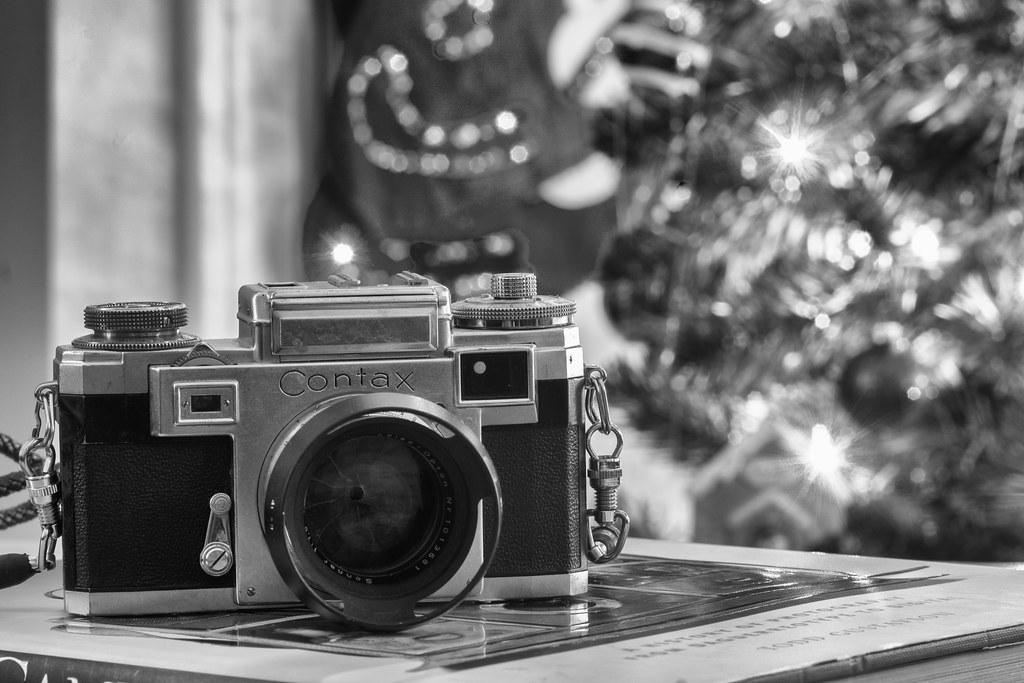
Camera Specifications
Make: Zeiss Ikon Ag
Model: Contax IIIa
Type: Rangefinder
Format: 135 (35mm), 36x24mm
Lens: Interchangeable, Contax RF-Mount
Shutter: Metal Vertical Travel Focal Plane Shutter, 1″ – 1/1250″ + Bulb & Time
Meter: Uncoupled, Selenium Based Exposure Meter, ASA-6 – ASA-500
Dimensions (WxHxD): 1.5″ x 3″ x 5.25″
Weight: 800g
Year of Manufacture: 1951-62
Background
It all started with Leica; the release of their cine-film format rangefinder in the latter half of the 1920s brought 35mm film into the mass market big time. And Leica commanded the market, but Zeiss Ikon wanted a piece of the action. They sat down and decided to build a better 35mm rangefinder. The result would be the 1932 Contax. While the Contax lacked the fit and finish of Leica, it did have one thing Leica did not. That would be a top shutter speed of 1/1000th of a second; Zeiss achieved this by using a brass metal shutter curtain, which acted like a rollup garage door. For Zeiss, the Contax was less a final camera design and more a work-in-progress. There are no less than six variants, although the total number remains unknown. Zeiss turned to their lead designer Hubert Nerwin to overhaul the Contax. Nerwin and his team would give Zeiss two cameras in 1936, the Contax II and Contax III. Both cameras shared a new overall design with much of the boxy nature stripped away; they included a single view/rangefinder window, the first of its kind. They also improved the top shutter speed to 1/1250 of a second. The only difference between the II and III is that the III features a selenium exposure meter. Zeiss won big, and many professional photographers were using Contax rangefinders, attracted to the fast high-quality lenses and shutter speeds. The Contax II saw extensive use by noted Life photographer Robert Capa who carried a pair of Contax II cameras during his service in the Spanish Civil War and World War Two. During the War, the executives of Zeiss were already friendly towards Nazi leadership and used their precision manufacturing and optical acumen to support the war effort. Zeiss produced parts for the Luftwaffe and set up shots at the Flossenburg Concentration camp to use the camp’s forced labour. With the headquarters located in Dresden, much of Zeiss was reduced to dust during the allied bombing campaigns against the city. When the dust settled, Zeiss found itself under Soviet control. While the Soviets continued to produce Contax cameras out of Dresden, most drawings were sent to the Arsenal factory in Kyiv. These drawings and some parts would be put towards building the equally iconic Kiev-2, Kiev-3, and Kiev-4 cameras. But the American and British occupations wanted to reestablish Zeiss in the west and got some designers and designs out, including Nerwin. The reason was two-fold. First, they needed the optical technology to get the West German camera business up and running, including Franke & Heidecke; second, they knew it would help improve and rebuild the German economy. Zeiss-Ikon AG settled in Stuttgart and took the chance to give the II and III complete overhauls. Both cameras were slimmed down, both in size and weight, using new materials; the shutters were redesigned, and switched silk streamers switched for nylon and gears to maintain the alignment of the slats. The shutter materials were swapped out for painted aluminium; this resulted in a smaller distance between the lens mount and the shutter curtain. The mount stayed the same, and most pre-war lenses would mount without issue on the new models. But the size reduction meant the old Biogon 35mm f/2.8 lens could no longer mount, and the ЮПИТЕР-12 (Jupiter-12) 35mm f/2.8 lens would not mount either for the same reason. The result would be the Contax IIa in 1950 and Contax IIIa in 1951. Both cameras proved popular, but by the end of the decade, the introduction of the Nikon F saw the rise in popularity of the SLR among professional photographers. Production ended on both cameras in 1960, and Zeiss dropped them from the catalogue in 1961.

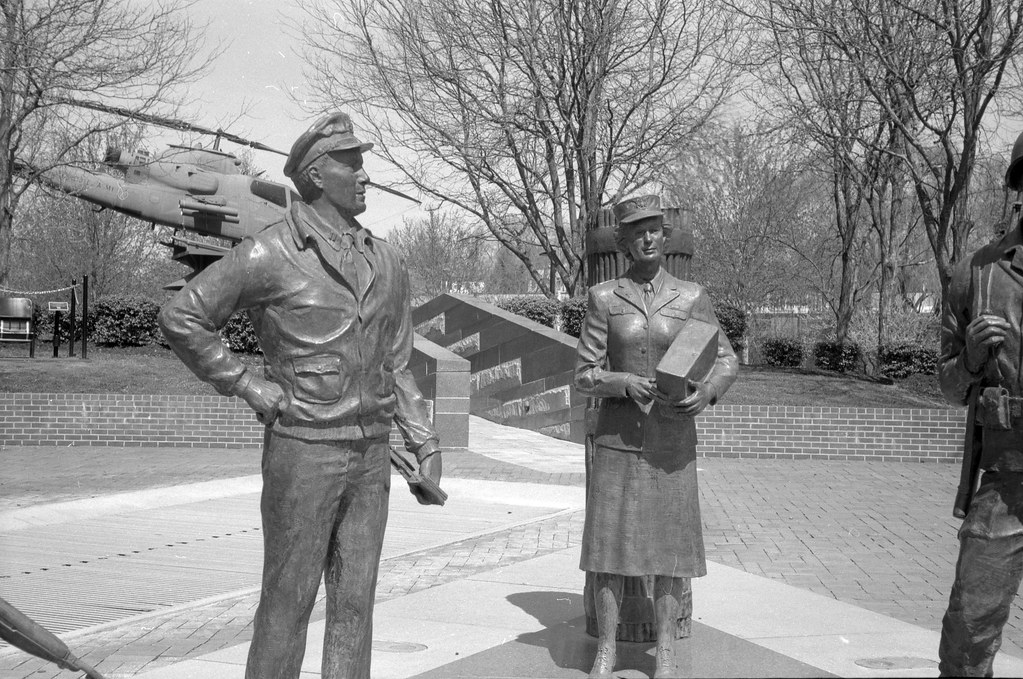


Impressions
I won’t wax poetic about it, but the Contax IIIa is not a good-looking camera. While not as bad as the original Contax, which took its design cues from the Argus C3, the IIIa is still boxy. But honestly, the camera is much easier to use than the Argus C3. The one thing that sets the IIIa apart from other contemporary cameras is that the rangefinder and viewfinder are in one window and are decently bright. The patch could use more contrast, but that is mostly due to age. Working the focus is easy with the focus wheel, and having an infinity lock means your focus won’t slip when moving and is much easier than using the lens barrel. The shutter release is in the middle of the film advance knob, which used to confuse me, but once I started working, more made sense. While I’m not a fan of the metal knob, which in colder weather can dig into your skin, the position does help with being able to quickly move back and forth between the release and the advance. My only concern is that advancing the film is a long twist. While the meter on mine is dead, it has a great shield to help preserve the selenium cell. The meter is uncoupled, and you can adjust all your settings using the dial around the rewind knob and then duplicate them on the lens and shutter dials. I just stick to an external meter, which works as well and is probably faster than the in-camera meter.



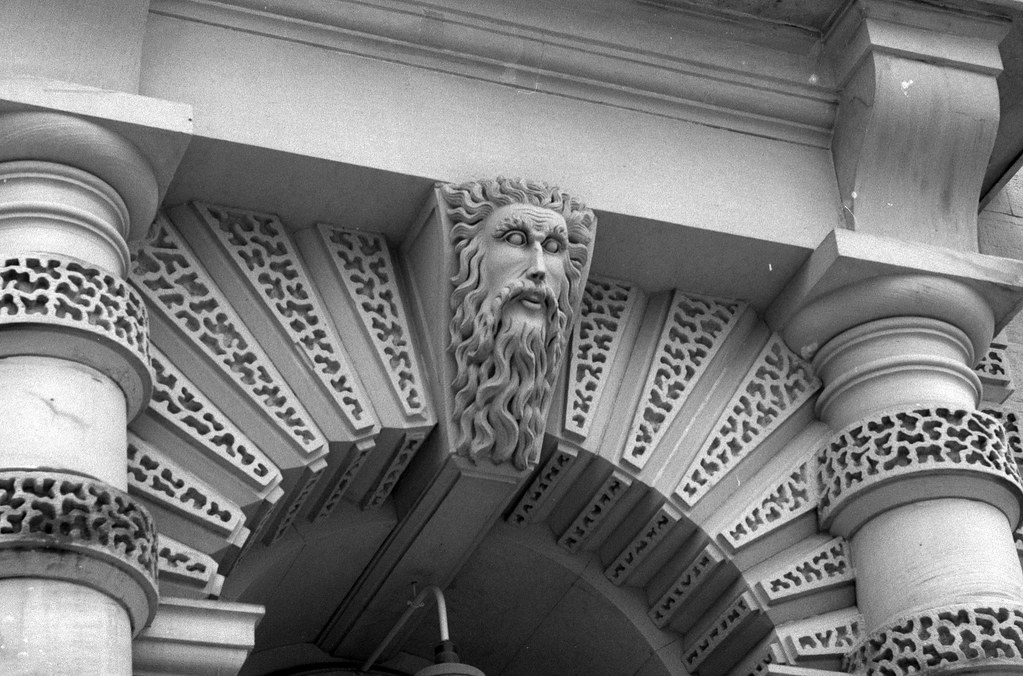
Experiences
As I mentioned, being an SLR guy, a rangefinder often sees me having trouble, but the IIIa fits. I don’t know what it is; I guess just that little connection to history is what does it for me. But the IIIa offers me experience with a camera I don’t have with my other cameras. The only camera close was the Nikon F, probably because it is also based on a similar rangefinder design. Loading film is far easier on the IIIa than on a contemporary Leica, but you do have to dismount the entire back of the camera, and the takeup spool is fickle, and I find it will slip out easily. And once you lose it, good luck in finding a replacement. I’m used to being able to load film using one hand, but having to work it with two and find a spot to stash the back can prove troublesome. It also makes me understand why Capa always carried a pair of them. The controls are well laid out, and after I figured out why things were placed where they were, I could quickly release the shutter and advance without leaving the viewfinder. Focusing is okay; that focus patch is dull these days, but it works like a charm in good light. Plus, using a dial instead of the lens barrel helps operate the camera effectively. Despite being a solid camera, using it regularly with a strange rope-style strap is no big deal; I find the weight comforting, and the angled edges make it easy to hold. Of course, the camera gets chilly in the cold when you’re not wearing gloves, and some sharp knurlings are hard on the hands. Mounting and dismounting lenses are simple for those with a single set of bayonet lugs. The trouble comes when you have a double mount lens such as the ЮПИТЕР-9 (Jupiter-9) that can be a pain. Rewind is tricky, but once you learn you pull can pull the knob up, it moves along smoothly.
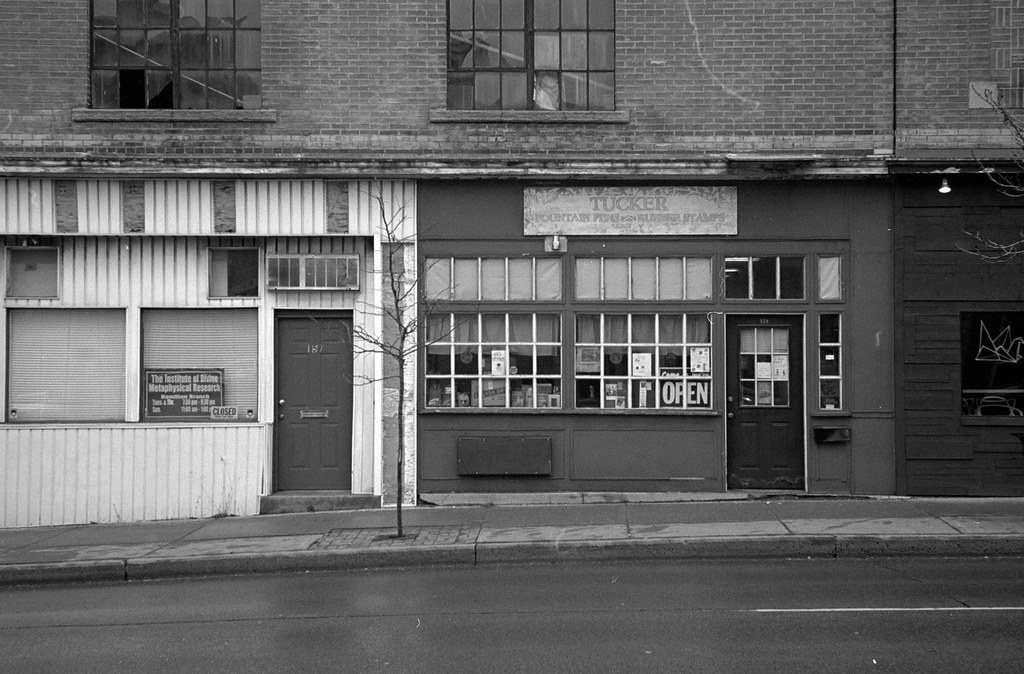



Optics
Here is another spot where the Contax shines. You can access a fantastic set of lenses, including Zeiss optics. The quality of Zeiss optics is all thanks to Ludwig Bertele. Bertele served as chief designer for Zeiss lenses, reduced the number of air-to-glass surfaces, and pioneered much of the early coating experiments long before this became the industry norm. As I mentioned, the Contax RF-Mount is tricky to get mounting; the single mount lenses like the Tessar and Sonar designs are a breeze to take on and off the camera. It’s why I only have two lenses for mine. The Zeiss-Opton Sonnar 1:1,5 f=50mm and Carl Zeiss Jena Tessar 1:3,5 f=5cm. I’ve also used the Russian copy of the Sonar design, the ЮПИТЕР-8 2/50 (Jupiter-8). These are all excellent options for the camera, and all easily mount and dismount with little difficulty. Some lenses have two sets of mounting bayonets; an example is the ЮПИТЕР-9 1:2 f=8,5cm, which also has a bit of an issue on the German-built Contax cameras with focusing to infinity; I know I missed a lot of shots when I used the lens once. You do have to watch out for the Pre-War Zeiss Biogon 35mm f/2.8 and its Soviet clone, the ЮПИТЕР-12 35mm f/2.8. I saw one and gladly purchased it, only to have John and Joan tell me it wouldn’t mount.



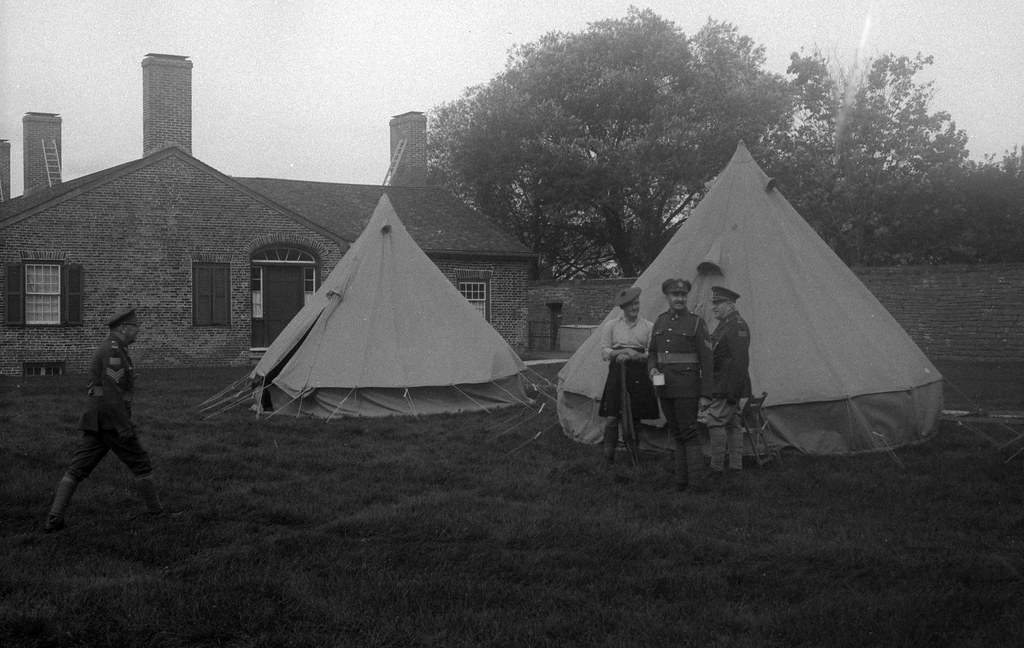
Lowdown
If you’re like me and cannot stand the trouble loading the Barnack-style Leica cameras and still want something from that age, then honestly, try the Contax II, III, IIa, and IIIa. They offer easier loading and optical options that are on par with Leitz glass. But you won’t get the camera cheap; without a lens, you’re looking at 150-300 dollars; with a lens, you will be spending between 650-850 dollars or more. If you’re buying a pre-war Contax III, you’re in the 650-850 dollar range with a lens. You could also get a Kiev camera for far less and still mount all the same lenses, as Arsenal did not make any adjustments to the shutter materials. But these cameras are getting on in age, production stopped on the Contax rangefinders in 1960, and my 1953 example is starting to show its age in both shutter speeds being off and frame spacing is irregular. The trouble is there are few people out there who can service these compact cameras, and you will pay a premium for their service, and they have waiting lists miles long at this point. If you are looking, certainly spend the money and get a post-war model and even if you start with Russian optics, they do a good enough job, heck I couldn’t tell the difference between my post-war Sonar and the Jupiter-8. If you want to read more about the fantastic history of Zeiss, head on over to my friend Mike Eckman’s site, he recently posted the entire back catalogue of the Zeiss Historica magazine and well worth a read, and it certainly helped with the refresh of this review.
Further Reading
Don’t just take my word on the Contax IIIa or IIa; you can check out the reviews by other awesome camera reviewers!
Sheldon Brown – My Contax IIIa Camera
Kemal Urgancioglu – Contax IIIa Review
Casual Photophile – Contax IIa – Zeiss Ikon’s Best Classic Rangefinder Reviewed
Mike Elek – Zeiss Ikon Contax IIa Review